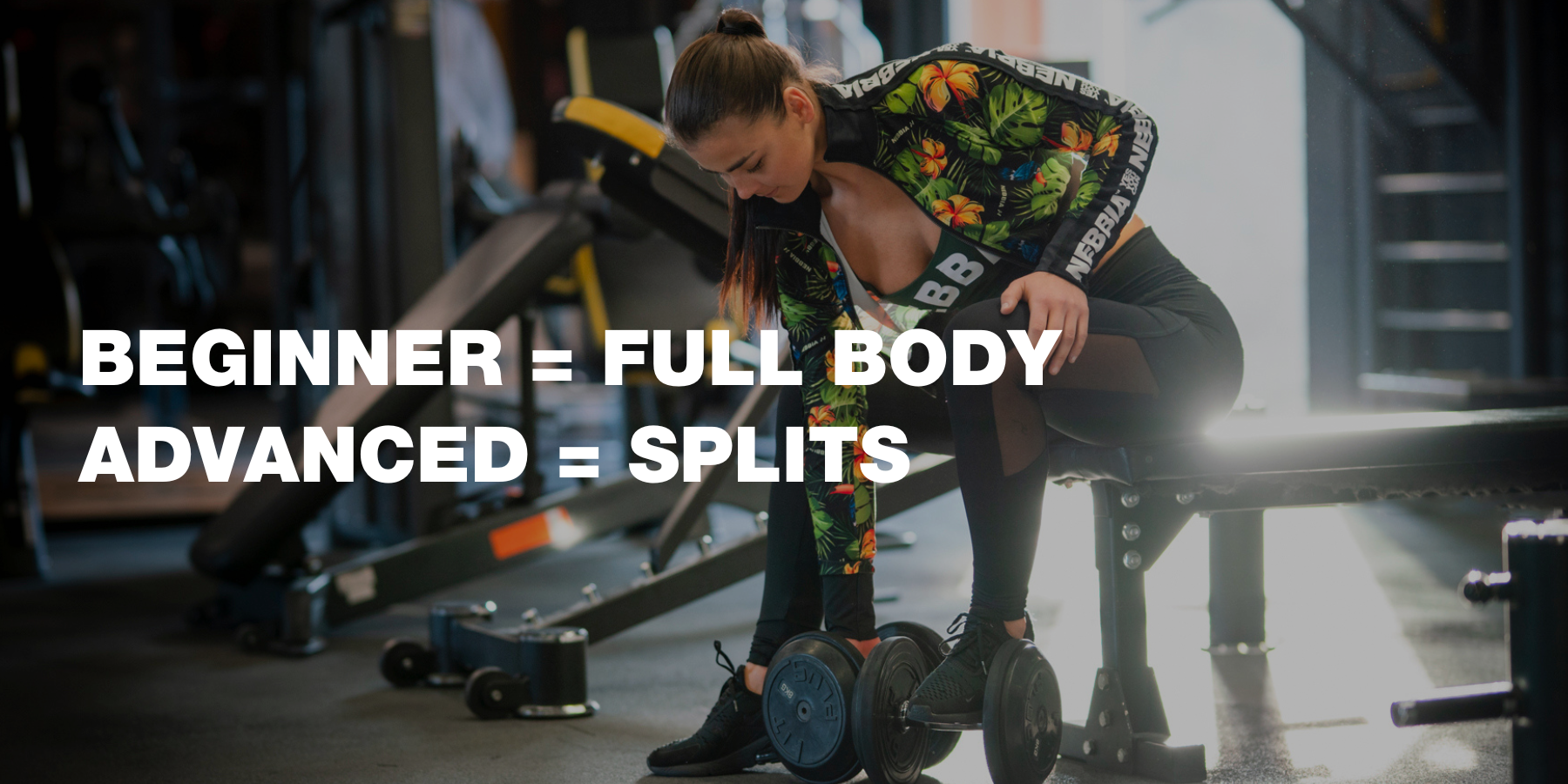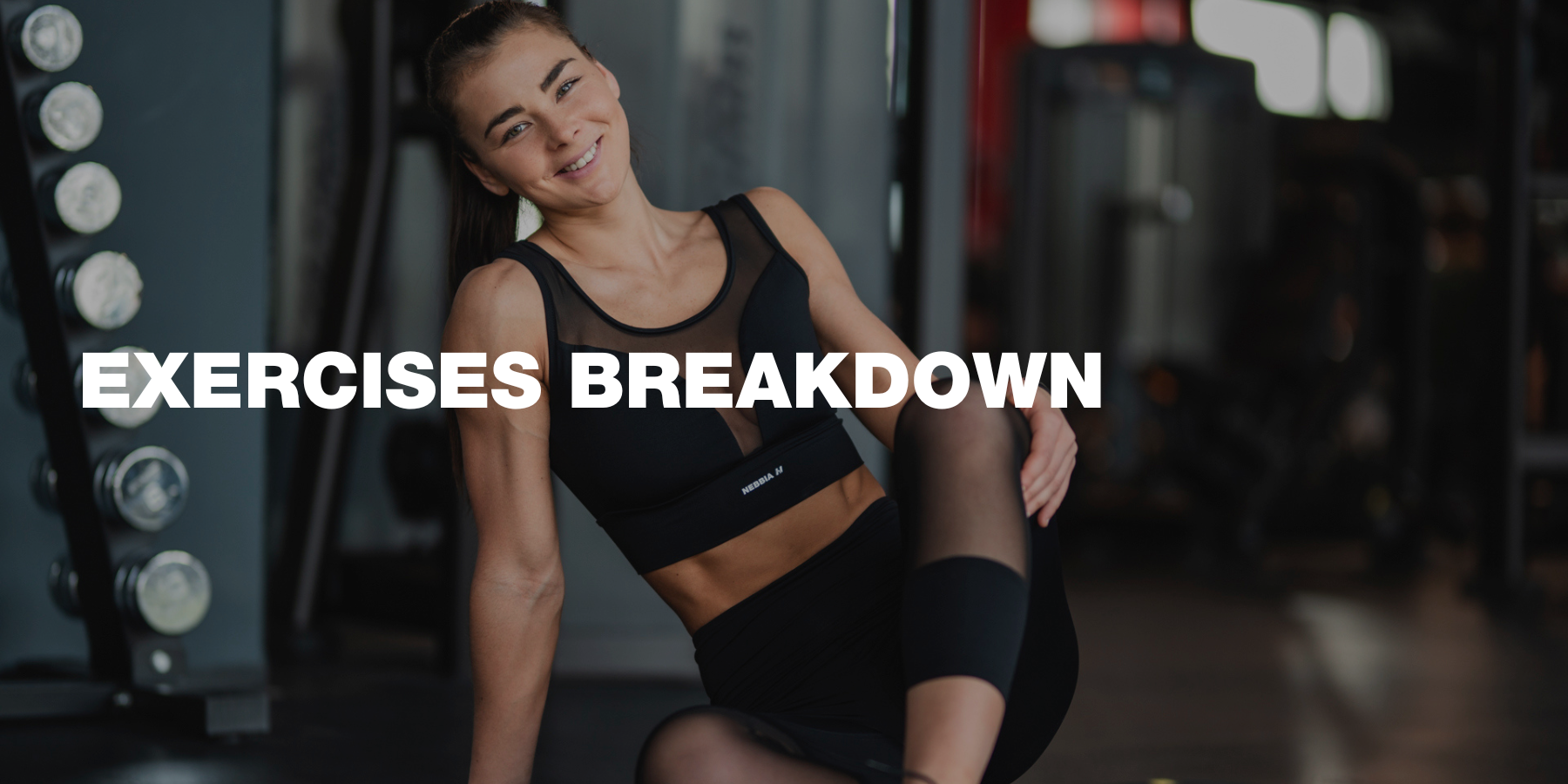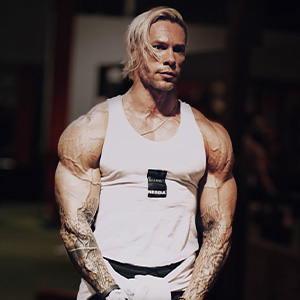How often should you exercise? Setting up a training plan correctly is so important, and we often make mistakes while doing it. That is why we called upon our NEBBIA girl and fitness trainer, Klaudia Mikitková. In this article, Klaudia will clarify the training basics and advise on how to get started.
“Since I first entered the gym, I wanted to develop abdominal muscles (SIXPACK) like Michelle Lewin. However, I can humbly dare to say that I have acquired a certain strength predisposition, and therefore I would like to share with you my findings and the correct training set-up.”

The most common mistakes we make at the beginning
Sticking to a workout plan is one of the most underrated things on the way to getting your dream figure. The main advantage of the training plan is the tracking of progress. If you have been stagnant for a long time, maybe the reason is the absence of a training plan. There are countless training routines and principles, but it is impossible to say precisely which is good and which is bad. Some will work for me, others for you, so it’s good to try more and, after a while, evaluate what works best for you.
The second most common mistake is copying workouts from professional bodybuilders. Social networks are full of training videos from athletes training, encouraging you to be inspired by their training. It’s not bad, of course, it can be beneficial, but you have to know what to take from it. Get inspired by the exercises, do them the way they do, but don’t copy their training plans because their life revolves only around the exercises. They spend most of their time training, preparing food, and regenerating, they don’t go to work for 8 hours a day, and their ability to regenerate is at a different level than yours.
No expert will tell you exactly how to train. Some recommend FULL BODY training, others SPLIT (a division of muscle parts), and others do not allow different training styles or principles. But you won’t know which ones are the best. There are only workouts that make sense and contain everything that should be included in a good workout. And that’s what you’ll find out today in this article. It is important that the training is composed sensibly so that you have fun, and above all, you must follow the principles of progressive load increase. The type of exercises performed, the intensity during exercise, the frequency of training and the correct periodization also play a big role.

How to effectively do split parts in training?
Thanks to the various studies, I can say that if our goal is muscle growth, exercise frequency is extremely important. That is, to achieve results, you need to exercise each muscle group at least 2 times a week, but the direct answer is whether there is no better full-body training or split.
Note: Splits are a kind of training system where individual body parts are divided into several days of the week. In other words, the whole body is not trained in one training session, but individual muscle groups are divided into different training sessions per week.
Beginner vs Advanced
If you are a beginner or visit the gym three times a week or less, I would recommend you to do full-body training. If you have more time and want to go to the gym four times or more, divide the sessions into two training groups, UPPER BODY and LOWER BODY, between which you plan to rest.
One of the other practices for those who visit the gym more often is the push-pull-leg, where you first train the chest with triceps, then the back with biceps, and finally the legs with shoulders. With this routine, you effectively exercise all muscle parts and, at the same time, have enough space for regeneration.
Don’t be afraid to occasionally change the order of exercises or parts in the training. The body responds very well to training changes. If you have a part that lags behind the other parts, put it at the beginning of the training when you still have maximum strength and energy, and you can practice this part the best.

Breakdown of exercises: Complex and isolated
To achieve the best possible progress, your training program must contain complex and isolated exercises. The explanation of complex and isolated exercises is very simple. Both types of exercises have their purpose, and it is very important to use them. In complex (basic) exercises, you engage several muscle fibres that work together with other muscles. Regularly practising these exercises strengthens the whole body and builds stability. Complex exercises include squats, leg presses, deadlifts, push-ups, and hip thrusts.
During isolated exercises, you load no more than one muscle on which you are focusing. Isolated exercises include, for example, biceps and triceps lifts, forearm curls, forward kicks, digging in and others.
It is necessary to realize that it is necessary to practice both types of exercises. Many people skip complex exercises and do mostly isolated exercises in the gym. This is a big mistake because you will supply your body with the necessary amount of energy, mainly through complex exercises. Therefore isolated exercises will be easier for you to do. Perhaps, however, they should put even more emphasis on technique because their correct execution is much more difficult than performing an isolated exercise. They are often the reason for injuries because, during a single exercise, you have to think about several muscles and movements. You can also play around with complex exercises and explore different angles and methods, e.g. supersets. A superset consists of two consecutive sets (without rest), where both sets are on a different muscle group (as opposed to a superset, which is on the same muscle group).
So if you want to get a functional body, build muscles more efficiently or burn more calories during training, your training should include as many complex exercises as possible. But this certainly does not mean that isolated exercises are useless. If you are recovering from an injury, isolated exercise may be a more suitable alternative.
And since we are dealing with injuries, we certainly don’t need to forget about unitary exercises. Exercise the right and left half of the body in isolation from the other with a unitary exercise. Unitary exercises have a greater demand on stability, joints, muscles and their fascia. They can also act as a higher prevention against injury in the future. The biggest advantage of this exercise is that it prevents muscle imbalances throughout the body. Therefore, I recommend including at least one unitary exercise in each training session. Bulgarian split squats, single-leg pelvic lifts, single-leg squats with the help of TRX, etc.

Rest in between sets
The more muscles you engage during the exercise, the heavier weights you lift, the more time you will need to recover and gain more strength to perform the next set. The general advice to start with is, listen to your body! Do the next set when your body and mind are recovered and ready to do the next job. However, the optimal rest time is 1.5 – 3 minutes. For maximum efficiency, follow the rules of gradually increasing the load and everything should go like clockwork. Of course, don’t forget about a healthy lifestyle, which is an integral part in addition to exercise.





































